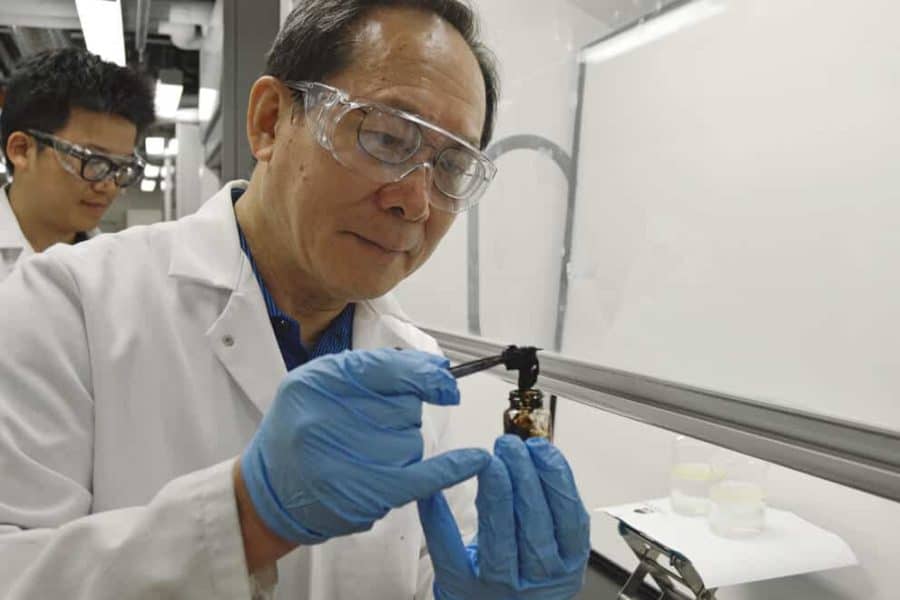A super-absorbent material developed by Penn State scientists could dramatically reduce the environmental impact of oil spills on oceans and allow recovered oil to be refined normally.
The synthetic material, called i-Petrogel, absorbs more than 40 times its weight in crude oil, and effectively stops the oil from spreading after a spill, according to the researchers.
The researchers designed the material to maximize its ability to absorb oil, but not water. The oil collected can then be refined by regular means and reused, further reducing environmental waste and pollution associated with other collection methods.
“If the recovered oil can’t be reused, it needs to be dumped somewhere. It’s useless,” said T.C. Mike Chung, professor of materials science and engineering. “That’s why we developed a technology that is comprehensive. i-Petrogel is a polymer made from oil. It’s a pure hydrocarbon.”
The researchers created i-Petrogel by mixing two polyolefin polymers in the laboratory, and then scaled up the product for use in large-scale field tests. Because the product is an oil-based polymer, it is strongly bonded to oil and also does not need to be removed before refining.
The team members recently reported their findings in Sustainable Chemistry and Engineering.
“We already know what kind of polymers can absorb oil,” Chung said. “Some oil is very thick and takes a long time to absorb, so we blended two polymers to provide structure with high surface area. It’s a microporous structure. If you look inside there are many small holes. This morphological structure allows the viscous oil to diffuse inside, allowing for more oil to absorb through the surfaces.”
The blend of two polymers — an interpenetrating polymer network of hard and soft polymers — can be optimized for different oil viscosities and other factors. The researchers have three U.S. patents on this work, and i-Petrogel is undergoing steps to become commercially produced.
During the field tests, researchers found the new polymer absorbed more than 40 times its weight in Alaska North Slope oil, double the capacity of its predecessor, Petrogel, also developed by the same Penn State researchers. The product takes on a gel-like consistency as it absorbs oil and remains at the surface. It can be readily removed using skimmers already used in clean-ups.
Previous techniques used to quell disasters like the Deepwater Horizon incident in 2010 recovered about 10 percent of the oil spilled, and the recovered oil was unusable. That generated about 80,000 tons of solid waste from soiled booms, and additional liquid oil waste mixed with salt water as responders struggled to contain the estimated 200 million gallons of spilled oil.
BP used dispersants and underwater oil-eating microorganisms to mitigatedamage from the worst oil spill in history, yet roughly 60 percent was never accounted for. For Arctic incidents such as the Exxon-Valdez spill in 1989, Chung said fewer recovery options exist because microorganisms are ineffective in that colder climate. Because of the lack of methods for dealing with cold-water spills, researchers tailored i-Petrogel for Alaskan crude oil, where 20 percent of all U.S. oil was extracted at the time of the Exxon-Valdez spill.
Chung said i-Petrogel works in any climate and pays for itself in recovered oil alone. For example, one barrel of crude oil could be recovered using less than 8 pounds of i-Petrogel, which costs $2 per pound to manufacture. Using today’s crude oil prices, it would cost $16 to recover $85 worth of oil.
The U.S. Department of the Interior’s Bureau of Safety and Environmental Enforcement funded this research.



